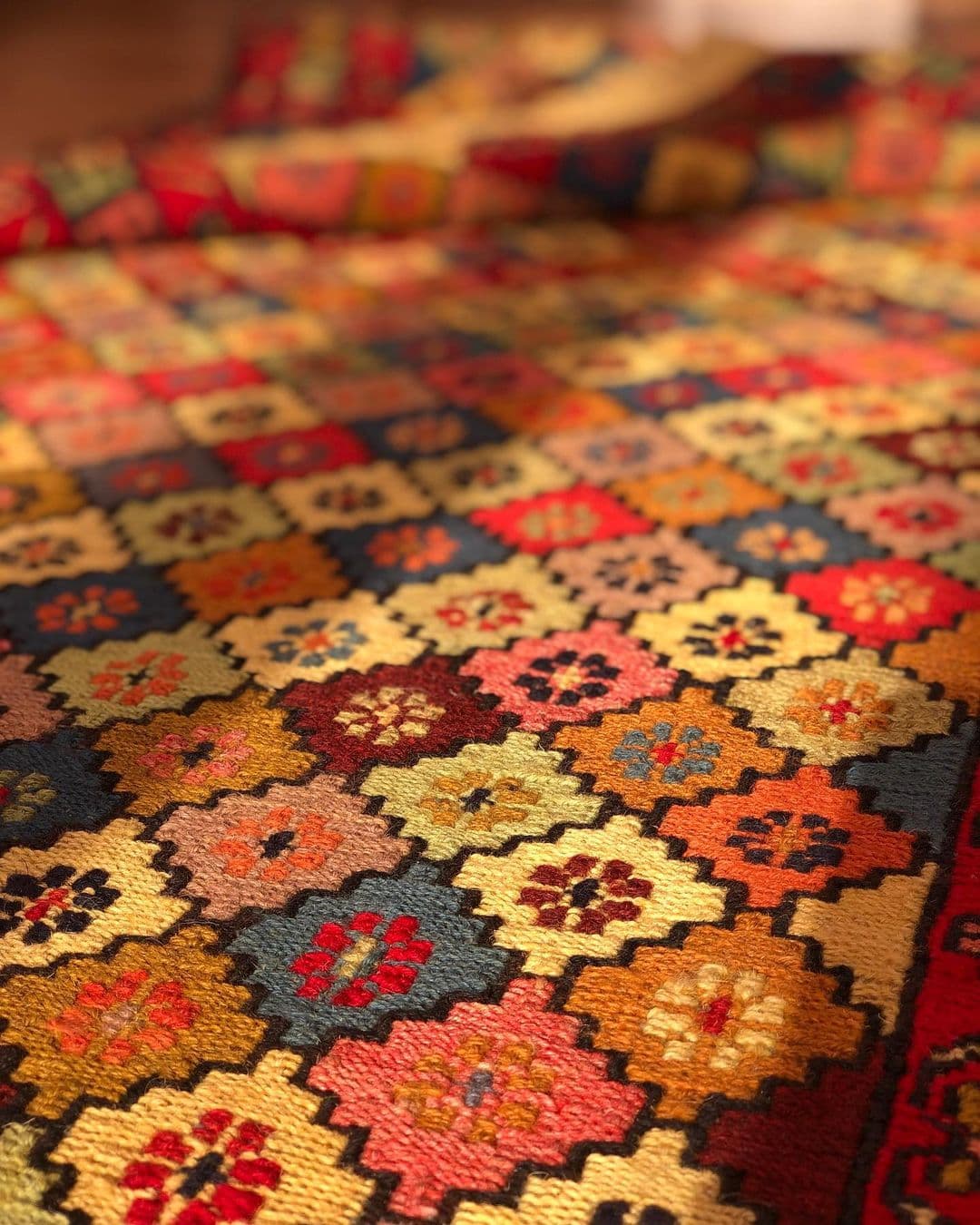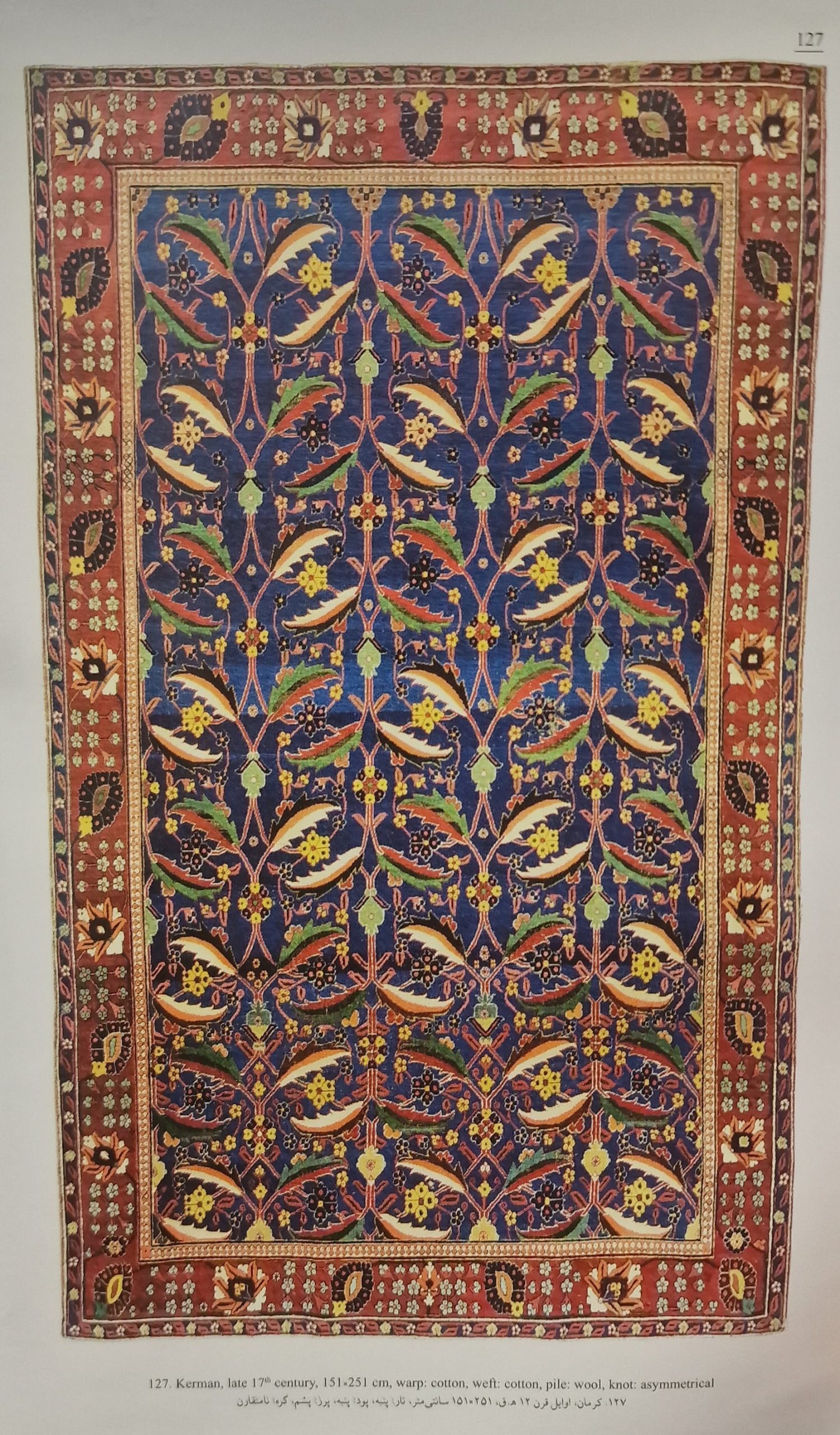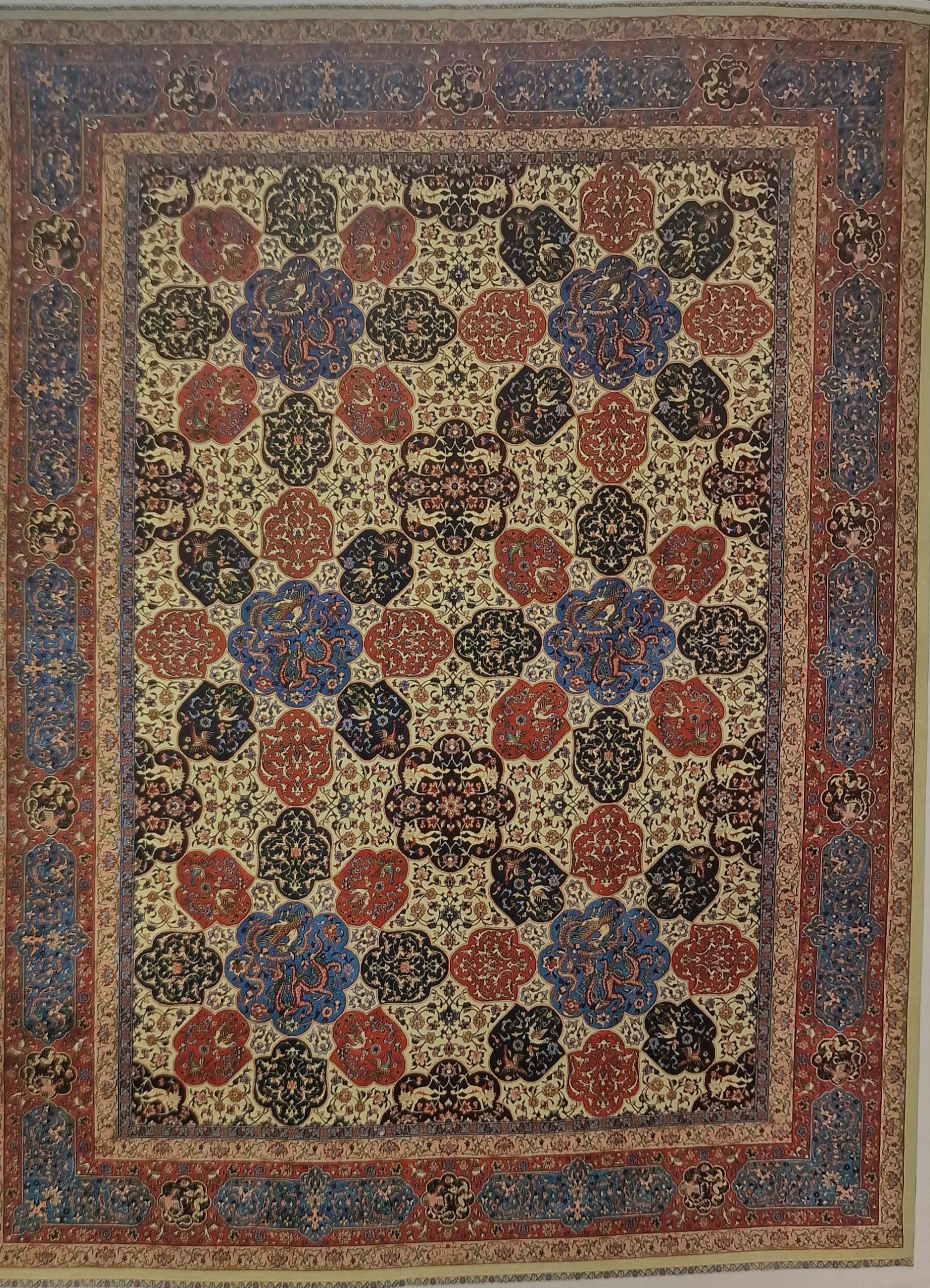Persian classical carpet and its types
Persian classical carpet designs , also known as Persian rugs, are renowned worldwide for their exquisite craftsmanship, intricate designs, and rich history. These handwoven carpets have been a significant part of Persian culture for centuries. There are several distinct types of Persian classical carpets, each originating from different regions of Iran, with its unique design elements and characteristics. Here are some of the most well-known types:
- Isfahan Carpets:
- Originating from the city of Isfahan in central Iran, Isfahan carpets are famous for their intricate floral patterns, often featuring central medallions and detailed borders.
- They are known for their use of silk in the pile, which gives them a lustrous appearance.
- Isfahan carpets are highly regarded for their fine craftsmanship and are considered some of the finest Persian rugs. Iranian carpet designs Persian classical carpet and its types
- Tabriz Carpets:
- Tabriz, one of Iran\’s oldest weaving centers, produces carpets with diverse designs, including floral motifs, medallions, and hunting scenes.
- These carpets often feature a high knot density and fine wool or silk materials.
- Kashan Carpets:
- Kashan, another historic carpet-weaving city in Iran, produces carpets with intricate floral and geometric patterns.
- Kashan carpets are known for their deep red and blue colors and central medallion designs.
- Heriz Carpets:
- Heriz carpets come from the town of Heris in northwestern Iran. They are characterized by bold geometric designs, large central medallions, and rich earthy colors.
- Heriz rugs are known for their durability and are often used in high-traffic areas. Iranian carpet designs Persian classical carpet and its types
- Kerman Carpets:
- Kerman, located in southeastern Iran, produces carpets with a wide range of designs, including intricate floral patterns, medallions, and pictorial elements.
- Kerman carpets are highly prized for their delicate craftsmanship and fine detailing.
- Qom Carpets:
- Qom, a city known for its religious significance, produces silk carpets with intricate floral and medallion designs.
- These carpets are often used for prayer and are prized for their fine quality and delicate weaving.
- Nain Carpets:
- Nain, a city in central Iran, is known for its high-quality carpets with intricate floral designs on a light background.
- Nain carpets often feature silk highlights and a high knot density. Iranian carpet designs Persian classical carpet and its types
- Yazd Carpets:
- Yazd, located in central Iran, is known for producing fine, handwoven carpets featuring floral patterns and central medallions.
- Yazd carpets often use high-quality materials and are known for their durability.silk rug
- Bakhtiari Carpets:
- The Bakhtiari tribe in southwestern Iran produces distinctive carpets known for their geometric and garden motifs.
- Bakhtiari rugs often feature vibrant colors and a sense of folk artistry.

Each type of Persian classical carpet has its own unique design elements, color palettes, and regional influences. Persian rugs are not only functional but also carry cultural and artistic significance, often reflecting the history, traditions, and creativity of the regions where they are produced.
Click to buy a silk carpet combining machine and handwork machine rugs.
Iranian carpet designs Persian classical carpet and its types
Iranian carpet designs are renowned worldwide for their intricate patterns, exquisite craftsmanship, and rich cultural and artistic heritage. These designs often incorporate a wide range of motifs, colors, and symbols, making Iranian carpets highly sought after and valued for their beauty and cultural significance. Here are some common Iranian carpet designs and motifs: Iranian carpet designs Persian classical carpet and its types

- Floral Designs:
- Floral motifs are among the most common in Iranian carpets. They include stylized flowers, leaves, vines, and blossoms.
- Common floral motifs include the lotus flower, palmette, rosette, and various garden scenes. pictorial carpet
- Geometric Patterns:
- Geometric designs feature intricate, symmetrical patterns, often using mathematical precision.
- These patterns can include stars, polygons, diamonds, and hexagons.
- Medallion Designs:
- Central medallions are a hallmark of many Iranian carpets. These medallions are often surrounded by complementary geometric and floral motifs.
- Medallions can take various shapes, such as octagons, diamonds, and hexagons. Iranian carpet designs Persian classical carpet and its types
- Arabesque Designs:
- Arabesques are flowing, curvilinear patterns that often incorporate intertwining vines and foliage.
- These designs can create a sense of movement and fluidity in the carpet.
- Animal Motifs:
- Persian carpets sometimes feature depictions of animals, such as birds, deer, horses, and mythical creatures like dragons and phoenixes.
- These motifs can have various symbolic meanings and add character to the carpet.
- Pictorial Carpets:
- Some Iranian carpets are designed as pictorial or narrative pieces, telling stories or depicting scenes from history, mythology, or daily life.
- Pictorial carpets can be highly detailed and artistically expressive.
- Calligraphy:
- Persian calligraphy, often featuring verses from the Quran or poetic verses, is occasionally incorporated into carpet designs.
- The calligraphy is an art form in itself and can be rendered in various styles. Iranian carpet designs Persian classical carpet and its types handmade carpet
- Tree of Life:
- The \”Tree of Life\” motif is a recurring theme in Iranian carpet designs, symbolizing the cycle of life, growth, and eternity.
- It typically features a central tree with branching limbs and lush foliage.
- Boteh (Paisley):
- The boteh, or paisley, is a distinctive design element often found in Iranian carpets. It has various interpretations, including fertility and eternity.
- The boteh resembles a teardrop or droplet shape with a curved end.
- Mihrab (Prayer Niche):
- Prayer rugs often feature a mihrab, a niche or arch that indicates the direction of Mecca for Islamic prayers.
- Mihrabs are an essential design element in prayer rugs and symbolize the spiritual connection between the worshipper and the divine.
- Color Variations:
- Iranian carpets use a wide range of colors, from rich reds, blues, and greens to softer pastels.
- The choice of colors can have cultural and regional significance. Iranian carpet designs Persian classical carpet and its types

It\’s important to note that the specific design elements and motifs in Iranian carpets can vary based on the region of production, the weaver\’s artistic expression, and the historical context. Each carpet tells a unique story and carries layers of symbolism and cultural heritage, making them not only functional floor coverings but also valuable works of art.
